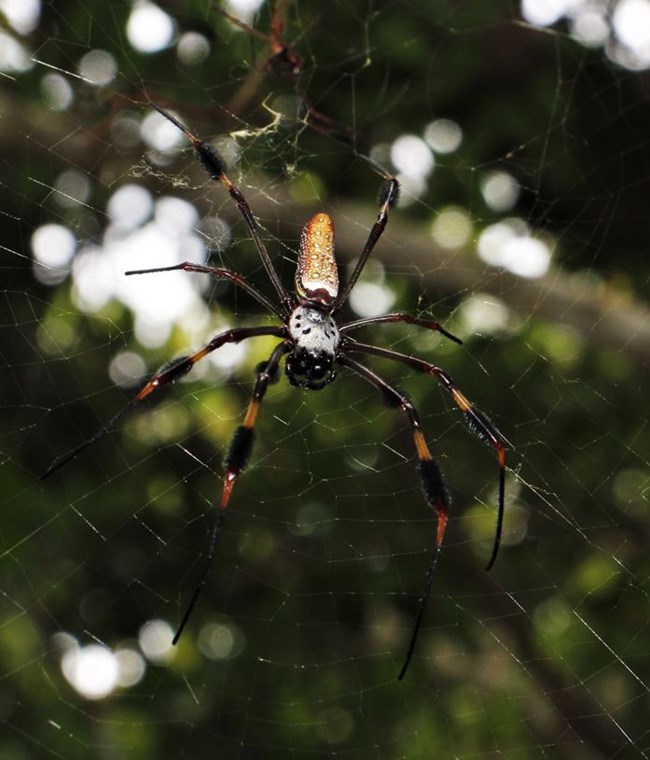
NPS If you mate, your genes are passed to the next generation. But, if you mate, you become lunch for your “wife”. This is the dilemma faced by the male golden silk spider, more commonly known as the golden orb weaver or calico spider. Locally, this spider is mistakenly known as the "banana spider". This colorful spider is common throughout the southeastern United States in shaded woodlands, secondary dunes, and swamps. At Fort Matanzas National Monument you will see many of these spiders in late summer along the nature trail and around the visitor center, hanging in the middle of their circular webs which can be as large as three feet (one meter) across. The web’s support strands, which often span great distances, are spun from a strong, non-sticky, yellow silk, hence the name golden silk spider. The connecting strands, however, are extremely sticky. The spiders prey on any flying insect, such as mosquitoes, unlucky enough to get caught. You may see these spiders repairing their webs early in the morning. They often replace at least half of the web each day if it becomes torn from the struggles of insects which had the misfortune of getting caught the night before. By August it is the female spider which is most evident. The female’s body can reach a length of 1 to 1 ½ inches (2-3 cm). The cephelothorax (head and upper body) is white with three black spots on both sides. The reddish-brown abdomen with white spots makes up about two-thirds of the body length, and grows even larger as eggs develop inside. The long, orange legs have tufts of short, black hair at each joint which help it detect vibrations and locate prey caught in its web. While the female is a giant, the male’s body is only about 1/8 inch (3-4 mm) long. Look for the smaller male clinging to the periphery of the web, staying out of the way of the female in the center, but able to glean leftover insect meals. During mating, this smaller male approaches the female, climbs onto her massive back, and mates with her. Immediately after mating, she bites and kills him, using him for food. This extra nourishment gives her the much-needed strength to make her egg sac and lay her eggs. She will then attach the egg sac to the underside of a nearby leaf and guard it until she herself dies that winter. These beautiful spiders are fun to observe, but like most animals, they will bite if harassed. Although non-venomous, the bite feels similar to a wasp or hornet sting. Please leave them alone, and they will leave you alone. |
Last updated: August 18, 2024
